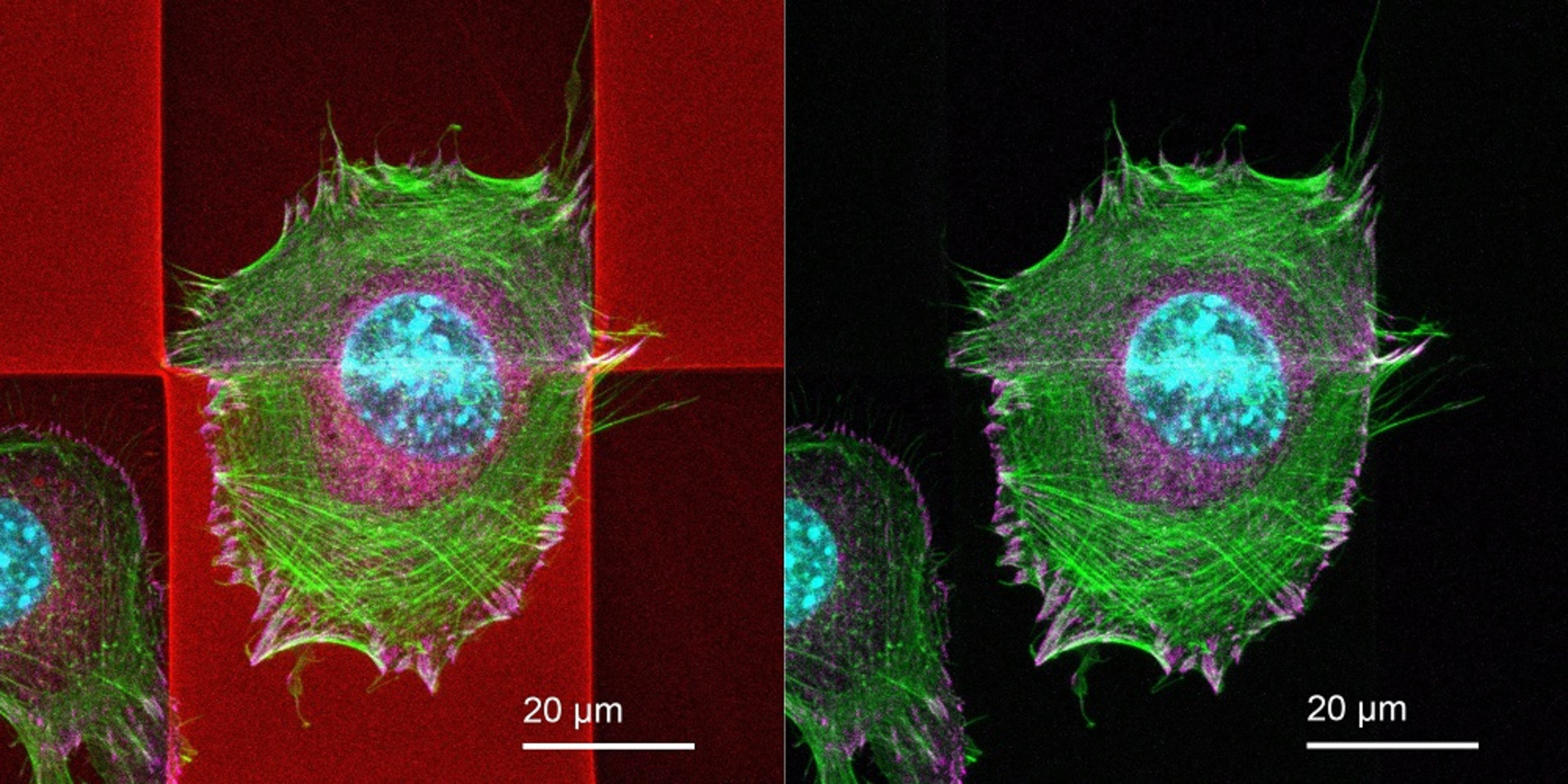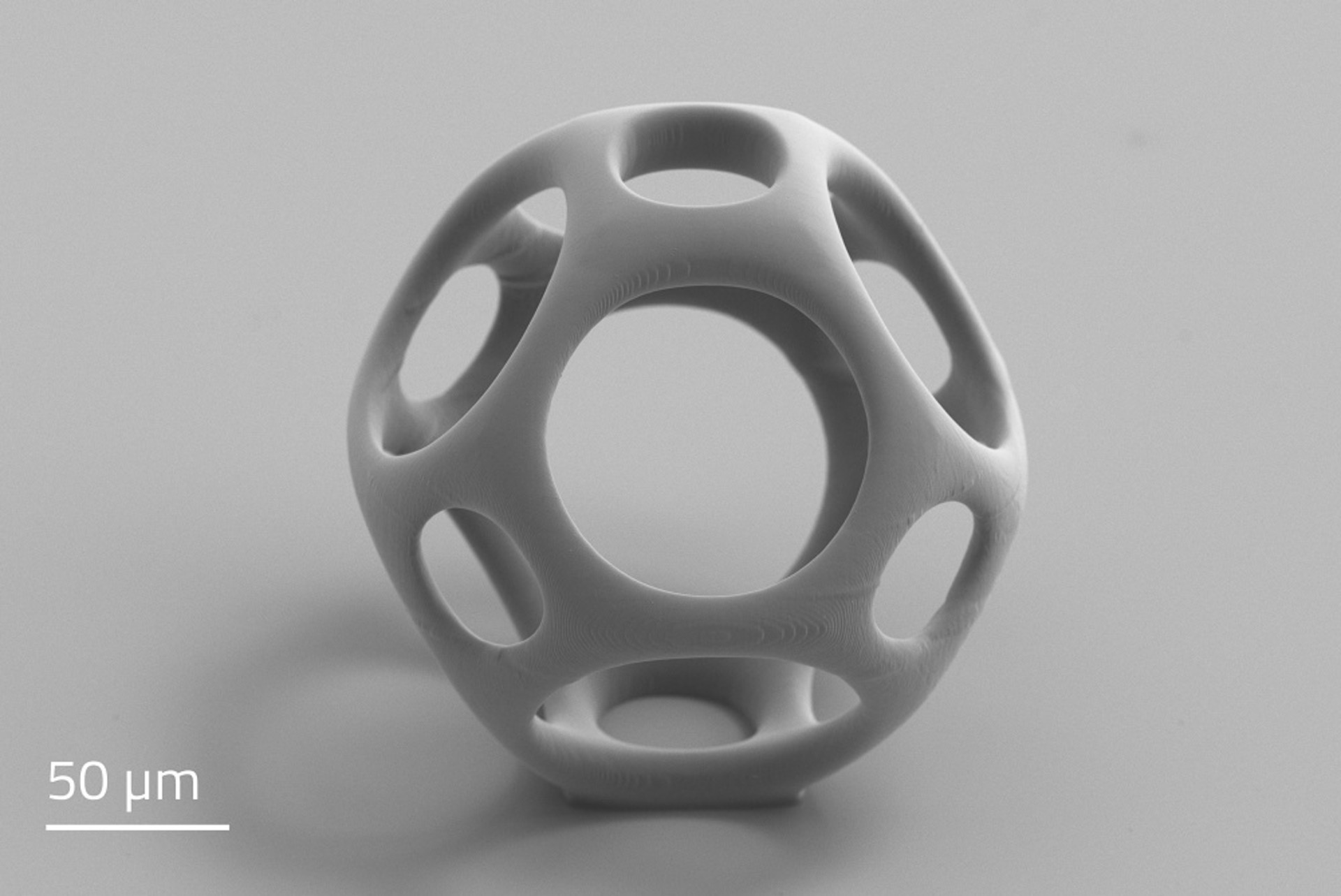2D cell culture systems have been standard for the past century, enabling findings in many applications, ranging from stem cell research, drug screening, and regenerative medicine. However, cells interact with neighboring cells, the extracellular matrix, and surrounding molecules in 3D. This increasing complexity demands new microfabrication methods to go from 2D to 3D cell culture platforms. The advances of Nanoscribe’s 3D Microfabrication have demonstrated how this technology allows to print intricate 3D microstructures such as cell scaffolds. Now the company takes a further step forward: With the new IP-Visio biocompatible 3D microstructures are 3D-printed with ease.
Biocompatibility and low autofluorescence
The printing material is non-cytotoxic according to ISO 10993-5. This makes IP-Visio suitable for cell-friendly 3D scaffolds. Thus cell behavior can be studied on filigree 3D-printed micro-scaffolds. Moreover, with Nanoscribe’s printing technology scaffolds can be fabricated to mimic realistic microenvironments with high precision.




